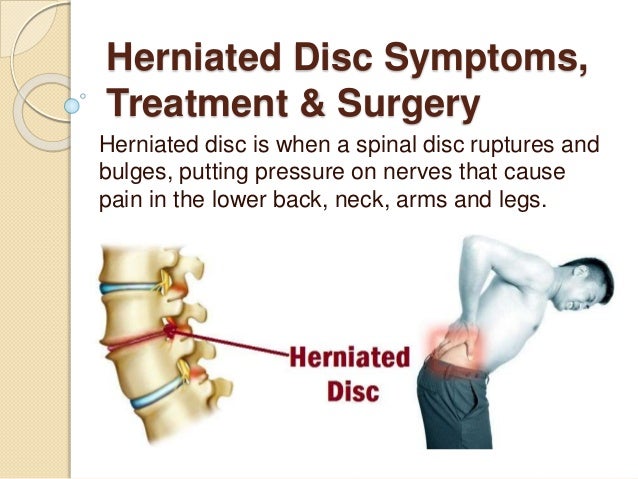Introduction:
Your spinal column is
made up of a series of vertebrae stacked onto each other. These bones are
cushioned by discs. The discs prevents the bones by absorbing the shocks from
daily activities like walking, twisting or lifting. Each disc has two parts:
- A soft, gelatinous inner portion and
- A tough outer ring.
Any injury can cause
the inner portion of the disc to pop out through the outer ring. This is known
as a slipped, prolapsed, or herniated disc. This causes severe pain and
discomfort. If the disc compresses one of your spinal nerves, you may also go
through numbness and pain along the affected nerve. In severe instances, you
may require surgery to repair the slipped disc.
Causes:
A Herniated disc
occurs when the outer ring becomes weak or gets torn which eventually allows
the inner portion to move out. Certain day to day activities may also cause a
slipped disc. A disc can slip out of its place while you are turning to lift an
object. Lifting a heavy object can place great stress on the lower back,
resulting in disc slipping out. If you have a physically demanding job that
requires a lot of weight lifting, you may be at magnified risk for slipped
discs. They are more common in men than women as men are more exposed to
lifting.
Overweight individuals
are also at magnified risk because their discs have to support the additional
weight. Weak muscles and a sedentary lifestyle may also give in to the
development of a prolapsed disc.
You are more likely to
experience a slipped disc with age. This is because your discs begin to lose
some of their cautionary water content as you age. Consequently, they can slip
out of place with an extreme ease.
Symptoms:
You can experience a slipped disc in any part of your
spinal nerve, from your neck to your lower back. The lower back is recognized as most
common areas for slipped discs. Your spinal column is an intricate web of
nerves and blood vessels. A herniated
disc can place extra
pressure on the nerves and muscles around it. Common symptoms include:
- pain and numbness, commonly on single side of the body
- pain that extends to your arms and legs
- pain that worsens at night with certain unavoidable movements
- pain that worsens after standing or sitting or walking short distances
- unexplained muscle weakness
- Tingling and burning sensations in the affected area
It is recommended to
consult your doctor if your pain results in numbness
that affects your ability to control your muscles.Your doctor can pool all these pieces of
information to determine what is causing you pain or discomfort and can then
provide a detailed diagnosis.






No comments:
Post a Comment